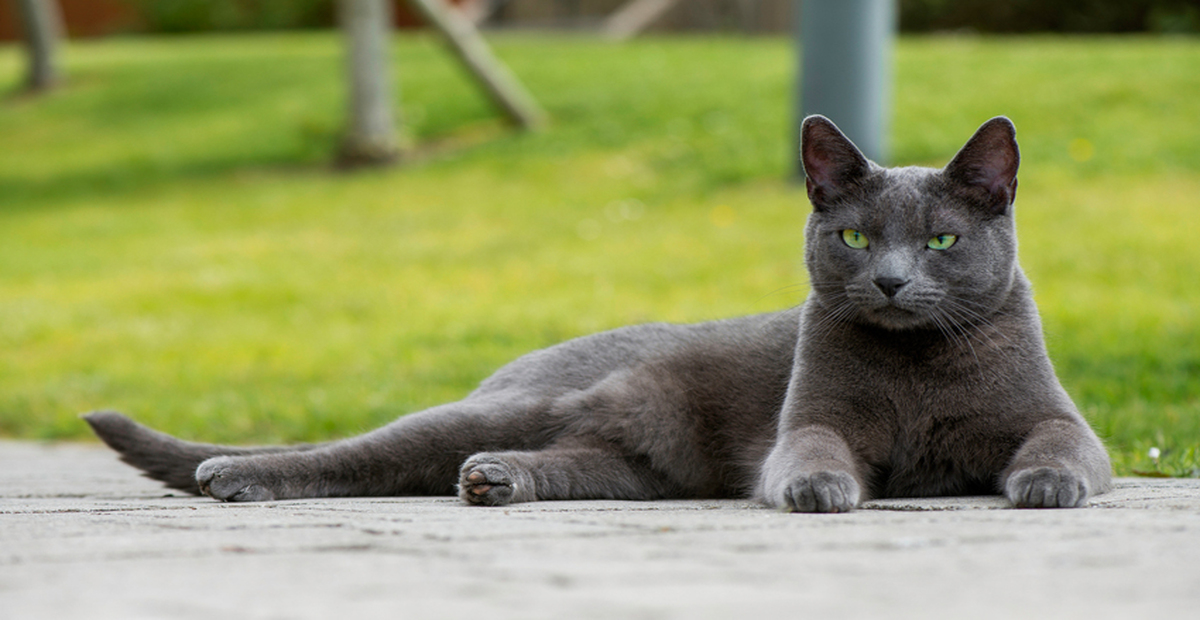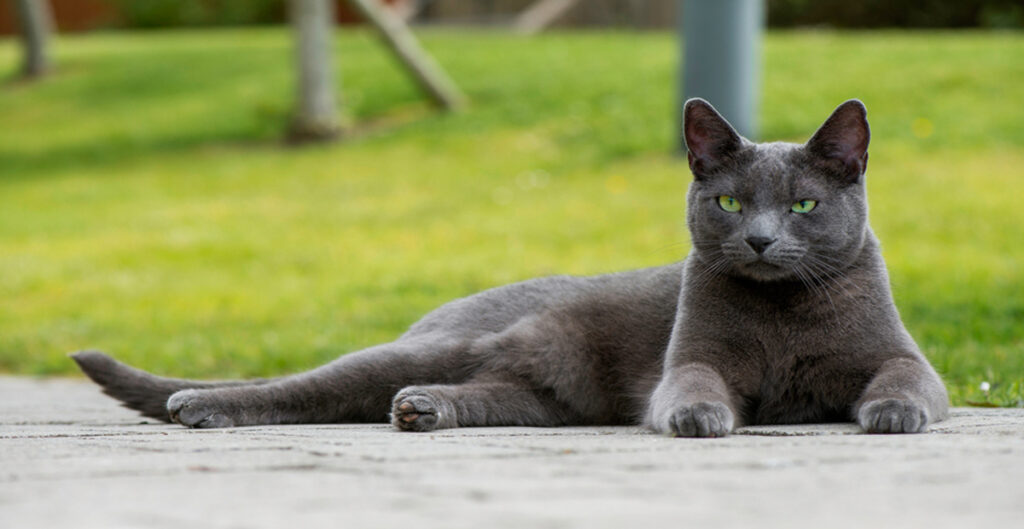
You can expect to have a gentle, loving new family member who loves to play and cuddle if you are looking to adopt a cat and have chosen the Russian Blue! There’s a lot to know about your new feline companion, too. For example, did you know that Russian blues are incredibly intelligent? This means that you should provide them with plenty of toys and games that allow children to apply their intelligence to keep them busy.
You should also be aware of any health issues with your new friend and how to feed him a healthy diet and maintain a great coat.
When it comes to health issues, we’ve got you covered with this list of 11 common health problems Russian Blues can experience.
Top 11 Russian Blue Cat Health Issues
1 Atopy
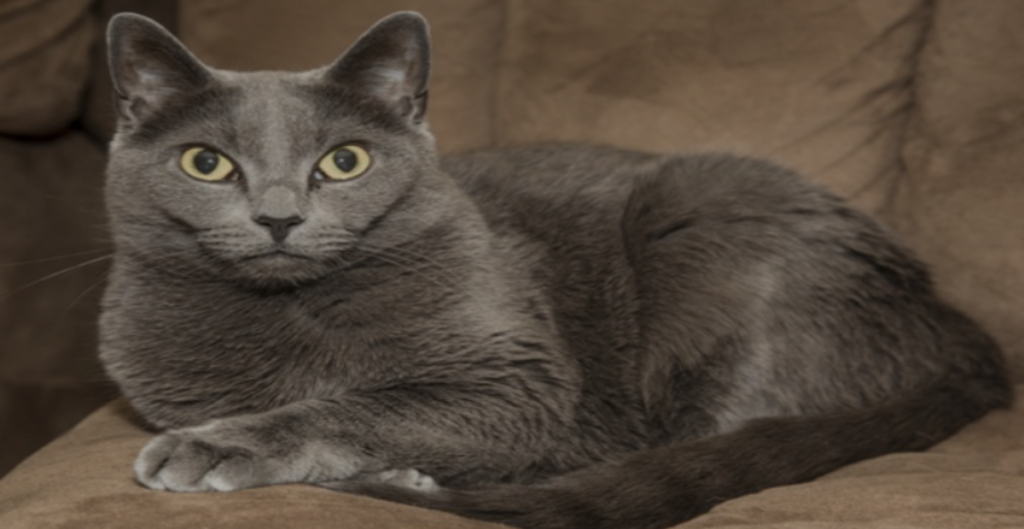
We often face itchy eyes or start sneezing a lot when we have allergies to dust and pollen. These allergens can cause itchy skin in cats, a condition called atopy. Usually, the face, ears, legs and stomach are where this itching occurs. It is also common for cats to show signs of atopy as soon as they are 1-3 years old, however it can occur at any age. Have your cat examined by a veterinarian if he has developed an incessant scratching habit. It is probably atopy. Similar to human allergies, these allergies can be treated in a number of ways, including medication and allergy shots.
Symptoms of atopy include:
Excessive licking of a specific part of the body
Petting someone’s ears or face
Recurrent ear infections
Red spots on the skin
Thinning of hair in the affected areas
2 Conjunctivitis
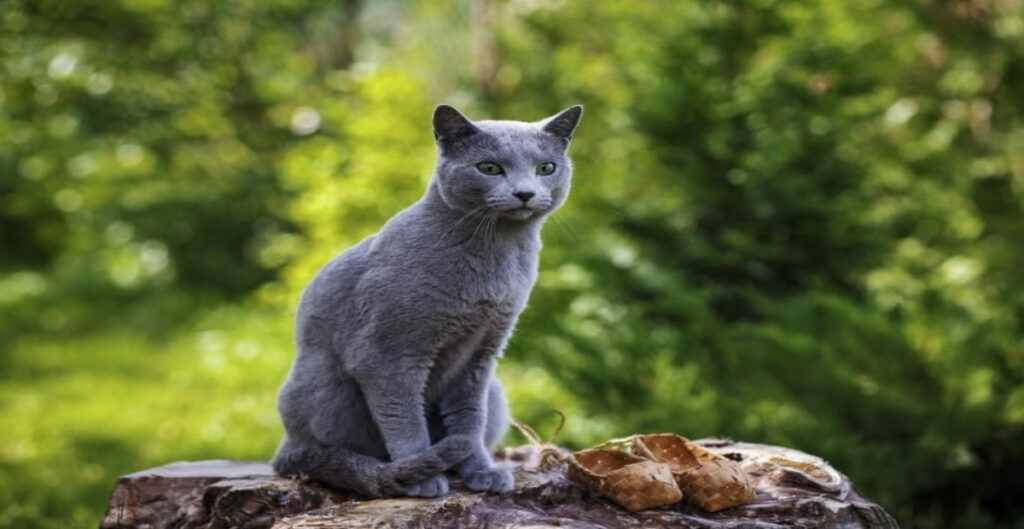
Yes, pink eye can affect cats too. It is somewhat comparable to what people perceive, although it is not exactly the same. Don’t worry about getting conjunctivitis—only other cats can spread the disease to other cats! There are several reasons why your pet may develop pink eye, which is defined as an inflamed red area on the lining of the eye. Abrasions to the surface of the eye, allergies, and bacterial or viral infections are among the causes. The course of treatment for conjunctivitis depends on what’s causing it, but may include eye ointments, antibiotics, eye drops, or anti-inflammatory medications.
Signs of conjunctivitis to look out for include:
Eyes that are red and swollen
Watery or watery eyes
Too much squinting or closing of the eyes
Discharge like pus
Inflation
3 Asthma
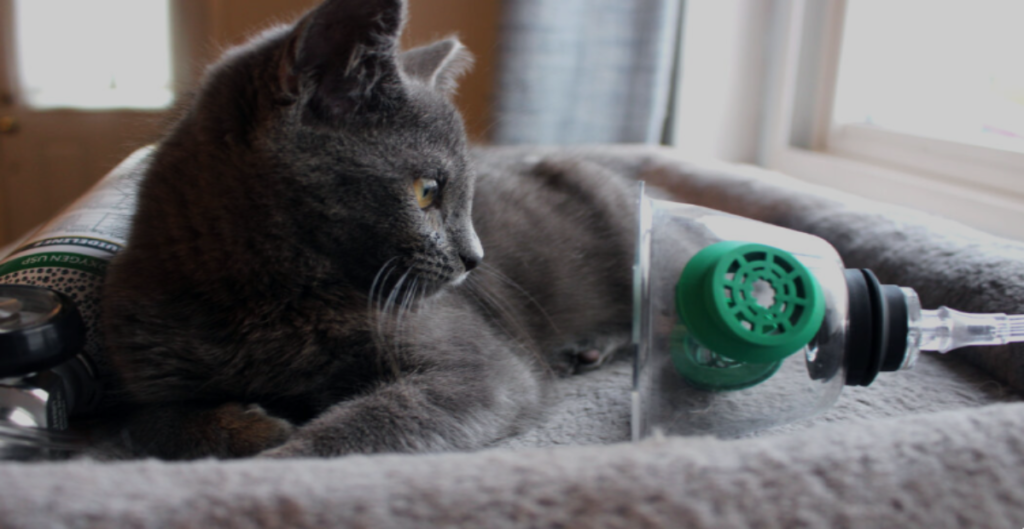
It may surprise you to learn that cats and humans can both have asthma. Almost all cats are affected by this respiratory disease, although it usually appears later in life – the majority of cats are diagnosed between 4-5 years of age. It is believed that a specific allergen that cats ingest and react to is the source of their asthma. This allergen triggers antibody activation after inhalation, which then causes inflammation in immune cells. As a result, breathing becomes more difficult and the airways narrow. To get a proper diagnosis, you should ask your vet to run tests if you see symptoms that may indicate asthma. The good news is that bronchodilators and corticosteroids can be used to treat asthma in cats!
Symptoms of asthma in cats include:
Difficulty breathing
Rapid breathing
Sigh
Cough
Breathing through the lips
Puke
4 Feline aortic thromboembolism

Feline aortic thromboembolism, sometimes known as blood clots, is one of the most common heart conditions encountered in cats. Because clots often lodge just behind the aorta, the name “aorta” is derived from this. This is especially harmful because the aorta carries blood from the heart to the other organs of the body. You should consult your vet immediately if you notice any of the symptoms described below, as these clots can be fatal. Your cat may be able to recover if you catch it early enough. Additionally, if your feline companion has already been diagnosed with any type of heart condition, it may be wise to ask about medications that can prevent clots from forming in the first place.
Symptoms may include:
Crying upset
Pain in hind legs
Dragging their paralyzed hind legs behind them
Breathing heavily
5 Diabetes
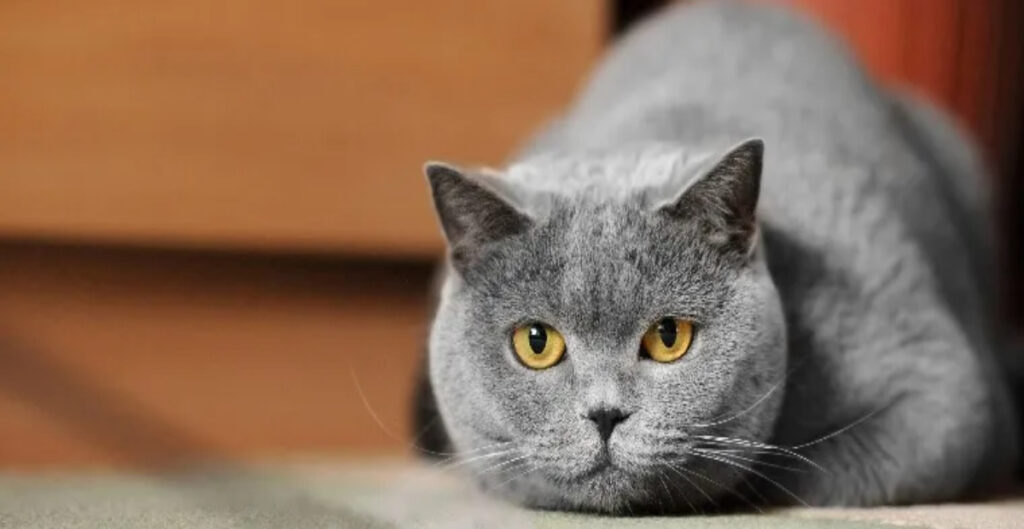
While you probably know what diabetes is, you may not know that cats can have it too. Your cat can develop diabetes even if he has no hereditary tendency to it, if he eats poorly or gains weight. Diabetes can be largely prevented by keeping your pet active and avoiding overfeeding! You should discuss getting a diagnosis and next steps with your veterinarian if you think your pet may have diabetes. Diabetes can be controlled with diet and exercise, although insulin may be necessary.
Symptoms of diabetes include:
Increase in thirst
Increased urination
weight loss without changing diet or appetite
6 Infectious Peritonitis in Catες

The coronavirus known as feline infectious peritonitis is inactive in the majority of cats. However, occasionally, this virus undergoes special changes that cause it to turn into FIP. FIP is fatal because it causes fluid to build up in the chest or abdomen, damaging blood vessels. Furthermore, there is no cure. Ask the breeder if FIP runs in the kitten’s family before making a purchase, because purebreds are more likely to contract the disease than non-purebreds.
Symptoms may include:
Fever of variable degree
Lethargy
Affected hunger
Weight loss
Fluid retention in the chest or abdomen
Eye inflammation
Difficulty breathing
7 Disorders of the Feline Lower Urinary System
As the name suggests, FLUTD is a group of diseases rather than a specific disease. These diseases affect the cat’s lower urinary tract, which includes the urethra and bladder. This category of diseases can include bladder stones, urinary tract infections, interstitial cystitis, blockages, and more. In particular, Russian Blues are thought to be more likely to develop bladder stones, which are mineral deposits in the bladder that occur when the body cannot absorb them properly. Since the symptoms of all diseases classified as FLUTD are often similar, your vet will need to run tests to determine the exact source of your cat’s symptoms. After determining this, they can choose the most appropriate course of action.
Feline Lower Urinary Tract Symptoms:
Improper removal
Difficulty urinating
More frequent urination
Just passing tiny volumes of pee
Urine with blood in it
Excessively meticulous genital hygiene
8 Hyperthyroidism
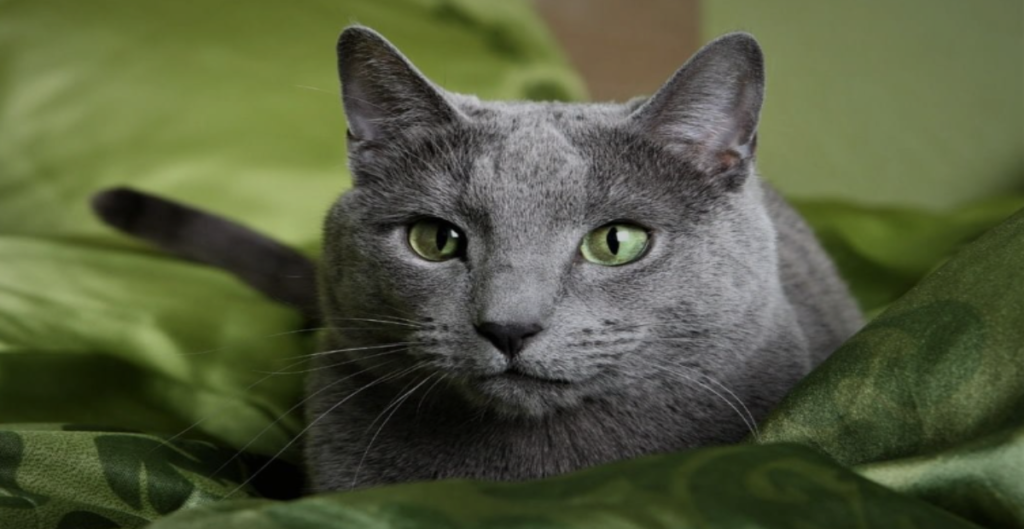
In cats, the thyroid gland regulates a number of body processes, although it can occasionally become overactive. We call this hyperthyroidism. This usually occurs in cats between 10 and 12 years of age, and the excess hormones that the thyroid begins to produce can seriously harm your cat. It can be fatal if not caught early, causing blood clots, heart failure and kidney failure. It can be successfully treated with medication or surgery if caught sooner rather than later. Plus, since the blood test that detects it is normal, it should be discovered right away (as long as your cat visits the vet for regular wellness exams).
If your cat is elderly, watch out for these symptoms:
Heart palpitations
Increased thirst and appetite
Weight loss
Worry
Increasing your activity level
Untidy coat
9 Hypertrophic cardiomyopathy
This is one of the heart conditions that veterinarians diagnose in cats most often. It thickens the walls of the heart, which often leads to blood clots and heart failure. Hypertrophic cardiomyopathy cannot be cured, however if caught early enough, it can be controlled with medication. Since it is a hereditary condition, you should confirm with any breeder you are considering buying from that they are not part of your future cat’s family.
Typically, symptoms do not appear until much later in the disease:
Anguish
Uncomfortable
Sluggishness
A stroke
Heart attack
10 Nephropathy
There are two types of kidney disease in cats: acute and chronic. Acute kidney disease is caused by sudden events such as infections, blockages, or poisoning, while chronic kidney disease develops as cats age. This indicates that kidney disease is more common in older cats, however it can affect younger cats as well. To determine the type of kidney disease your cat may be experiencing, your veterinarian may need to perform a series of tests. Then, based on the results, various treatments such as medication, dietary modifications, and surgery may be used.
Signs of kidney disease will include:
Drinking more water than usual
More frequent urination
Weight loss
Diarrhea
Puke
Lay dry
Brown tongue color
Bad breath
11 Obesity
You have to make sure you don’t overfeed the Russian Blue (don’t give in to their pleading eyes!). They sure enjoy their food. If given the chance, they will put on weight quickly, which is unfortunately a widespread problem with cats. Your cat will become less mobile and able to perform tasks to the same extent if it gains a lot of weight due to gluttony and inactivity. Worse, obesity can lead to diabetes, heart disease and other conditions. Talk to your vet about ways to help your beloved feline lose some weight if he seems to be putting it on—likely through dietary adjustments and more physical activity.
Symptoms of obesity include:
Consumption too much
I’m putting on weight
Reduced movement
More often exhausted
FAQs
In general, are Russian Blue cats healthy? It is true that Russian Blues are known to have long lives and are usually healthy cats. However, they have some health risks, like any breed. 2. What health issues are most prevalent among Russian blues? Urinary tract problems: Compared to other cat breeds, Russian Blues are more likely to develop bladder stones and urinary tract infections (UTIs). Many things such as diet, stress and dehydration can contribute to this. Obesity: Due to their love of food, they are prone to gaining weight. Obesity can cause diabetes and joint problems, among other health problems. Dental Issues: As with other cats, regular dental care is essential to prevent tooth loss, gingivitis, and plaque build-up. Hyperthyroidism: This disorder more often affects the metabolism of older cats and can lead to weight loss despite increased appetite.Kidney failure: Russian Blues are somewhat more likely to develop kidney disease, which is uncommon and may need special nutritional care. 3. What symptoms should I be aware of? 1. Difficulty urinating or urinating often but not much (UTI) 2. Urine containing blood (bladder stones) 3. Excessive urine production and thirst (diabetes) 4. Diarrhea or vomiting (gastrointestinal problems) 5. Difficulty breathing or rapid breathing (heart problems) 6. Weight loss or earth in felines without a tail
